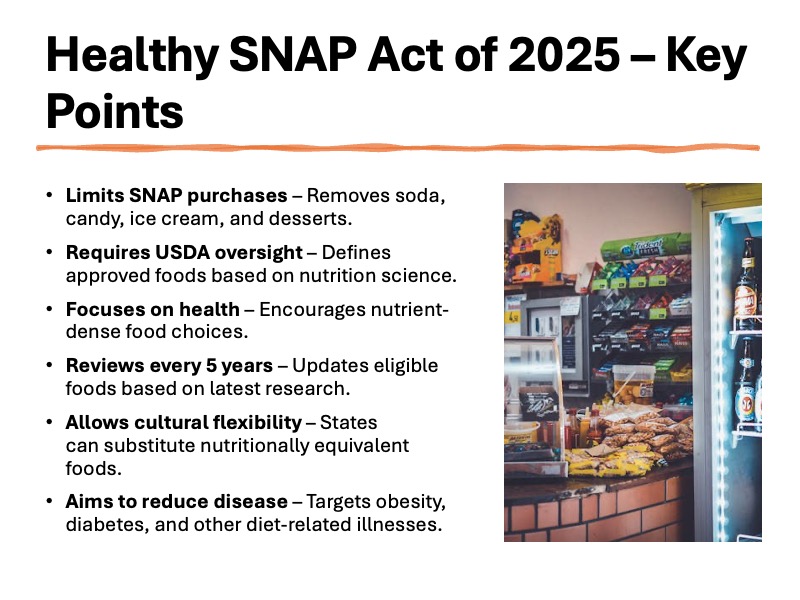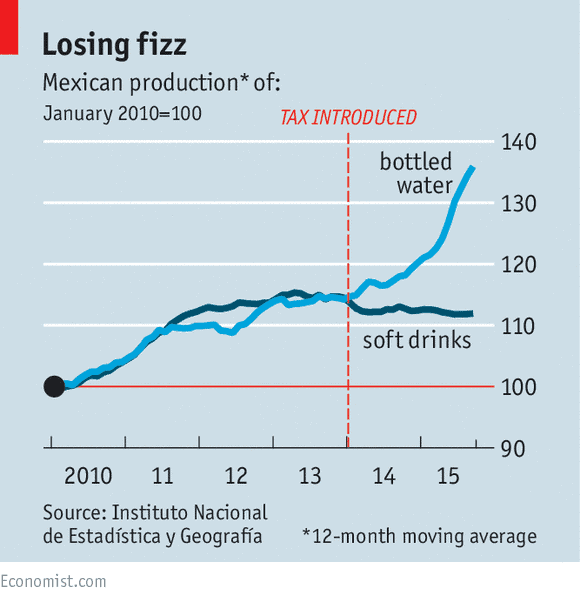How to Make America Healthy Again: What Does MAHA Mean?
The Make America Healthy Again (MAHA) initiative is a national effort to reverse the chronic disease epidemic and improve the overall well-being of Americans.
For decades, the U.S. has been grappling with rising obesity, diabetes, cardiovascular diseases, and mental health disorders, with healthcare expenditures ballooning to unsustainable levels.
Despite spending more on healthcare than any other country—$4.5 trillion annually—the United States has some of the worst health outcomes among developed nations (Centers for Medicare & Medicaid Services, 2023).
As a professional basketball player with a master’s degree in nutrition education, I have dedicated my life to understanding and implementing strategies to optimize health and performance.
Growing up with asthma and Tourette syndrome, I faced significant challenges that led me to seek treatments, lifestyle modifications, and alternative approaches to improve my well-being.
My experiences traveling and playing in Europe, Asia, and various other countries exposed me to different dietary habits, urban infrastructures, and public health policies, reinforcing my belief that the U.S. needs radical reforms to make America truly healthy again.
Robert F. Kennedy Jr. has emphasized the importance of addressing the chronic disease epidemic and improving public health through environmental and policy changes.
In alignment with this vision, this article presents a comprehensive, evidence-based strategy to Make America Healthy Again (MAHA) by implementing policy reforms, urban planning initiatives, corporate accountability, and community health education to create a healthier, more sustainable future for all Americans.
The Urgent Need for Reform: America’s Chronic Health Crisis

The United States ranks among the unhealthiest developed nations due to a combination of poor dietary habits, sedentary lifestyles, environmental toxins, and a healthcare system that prioritizes disease management over prevention. The statistics are alarming:
- 60% of American adults have at least one chronic disease, while 40% have two or more (CDC, 2023).
- Obesity affects over 42.4% of adults, making it a leading cause of preventable deaths related to heart disease, diabetes, and cancer (NIH, 2023).
- Only 12% of Americans are metabolically healthy, meaning nearly 9 in 10 people have some form of metabolic dysfunction (Science News, 2018).
- Mental health disorders affect 1 in 5 U.S. adults, with rising links between poor diet, inflammation, and mental illness (National Institute of Mental Health, 2023).
- Childhood obesity rates exceed 40%, and nearly 30% of adolescents are prediabetic (American Diabetes Association, 2022).
These health burdens result in skyrocketing healthcare costs, lower life expectancy, and reduced workforce productivity.
The solution lies in preventive healthcare, urban redesign, and systemic policy changes rather than merely treating symptoms.
How to Actually Make America Healthy Again
There’s no shortage of proposals claiming to solve America’s health crisis, but let’s be honest—some of them are outright ridiculous.
Unrealistic bans, extreme diet mandates, or policies that ignore economic realities will never create lasting change.
Instead of chasing short-term gimmicks, we need practical, responsible solutions that address the root causes of poor health and reduce healthcare spending in the United States while ensuring long-term benefits for individuals, families, and the economy.
The reality is that chronic disease, obesity, and poor nutrition in the U.S. aren’t just personal issues—they are systemic failures driven by flawed food policies, corporate influence, and inadequate education.
To fix this, we don’t need extreme government overreach, but we do need smarter policies that empower people to make better choices while reshaping the systems that have led us here.
Below, I’ll outline the most responsible, practical, and effective solutions that can genuinely improve public health, reduce healthcare costs, and create a healthier future for all Americans.
These aren’t radical ideas; they are strategic, evidence-based steps that, if implemented, will have an excellent long-term impact.
Reforming the Food System: Eliminating the Root Cause of Chronic Disease

The Standard American Diet (SAD) is a primary driver of chronic disease. It is high in processed foods, added sugars, and unhealthy fats while lacking fiber, essential nutrients, and healthy proteins.
Actiaons the government can take to reform the food system and eliminate the root cause of chronic disease include:
- Pass the Healthy SNAP Act: Restrict ultra-processed food purchases through the Supplemental Nutrition Assistance Program (SNAP) and instead subsidize fruits, vegetables, and whole foods. Studies show that SNAP participants consume more sugary beverages than non-participants, exacerbating health disparities (Andreyeva et al., 2015).
- Support Regenerative Agriculture: Prioritize sustainable farming that reduces pesticide use, improves soil health, and promotes nutrient-dense foods instead of monoculture crops like corn and soy, which fuel ultra-processed food production (Leite, 2022).
- Overhaul School Nutrition: Require whole-food-based meals in public schools while eliminating processed options and implementing farm-to-school programs to connect children with local farmers.
Increase Crop Protection for Fruit and Vegetable Farms: Provide expanded crop insurance and disaster assistance for specialty crops like fruits, vegetables, and tree nuts, ensuring farmers have the financial security to grow and supply healthier food options. - End Disproportionate Subsidies for Corn, Soy, and Wheat: Redirect funding from these monoculture crops— which are the foundation of ultra-processed foods—toward diverse, nutrient-dense specialty crops that align with national health goals.
Why Redistributing Subsidies Matters
- Specialty crops (fruits, vegetables, nuts, and horticulture) account for 30-40% of U.S. crop value yet receive minimal federal support compared to commodity crops like corn and soy (USDA, 2023).
- Farmers need incentives to shift production toward foods that nourish Americans rather than contribute to the chronic disease epidemic. Expanding crop insurance, research funding, and marketing support for specialty crops ensures the sustainability of healthy food systems.
- The government currently spends billions subsidizing ingredients for junk food, which drives obesity, diabetes, and heart disease while increasing healthcare costs (Searchinger et al., 2019). Reallocating funds toward whole foods will improve national health and economic stability.
This policy shift will promote food security, health equity, and long-term economic sustainability by aligning agricultural priorities with public health needs.
How to Improve School Nutrition
Problem: School meals are often highly processed, nutrient-deficient, and contribute to childhood obesity. Currently, 30% of U.S. adolescents are prediabetic, and 42% are overweight or obese (CDC, 2023).
Solution: This initiative connects schools with local farmers to provide fresh, organic, and minimally processed foods for school meals. Key components include:
- Federal subsidies for schools sourcing local food.
- Educational programs teaching kids about nutrition and agriculture.
- On-site school gardens to integrate hands-on food education.
Economic & Public Health Benefits:
- Reduces childhood obesity and improves academic performance (Lopez-Gil et al., 2022).
- Boosts local economies by creating a stable market for farmers.
- Encourages lifelong healthy eating habits starting at an early age.
For every $1 spent on local school food, an additional $1-$2.16 circulates through the local economy (Second Harvest Heartland).
Making Cities More Walkable & Promoting Active Living
The U.S. has designed its cities and suburbs around cars, often at the expense of public health.
Sedentary lifestyles fueled by car dependency have contributed significantly to obesity, heart disease, and other chronic conditions.
Research consistently shows that walkable communities lead to higher physical activity levels, lower obesity rates, and improved overall well-being.
A study published in Obesity (Silver Spring) found that U.S. adults living in high-walkability neighborhoods had:
- 48 percent higher odds of meeting physical activity guidelines
- 24 percent lower odds of obesity compared to those in low-walkability areas
Countries like Denmark, Japan, and the Netherlands, which emphasize pedestrian-friendly infrastructure, have significantly lower obesity rates and longer life expectancies.
Key Benefits of Walkable Communities
- Increases Physical Activity and Lowers Obesity
- More sidewalks, bike lanes, and pedestrian-friendly spaces encourage daily movement and make exercise more accessible
- People who live in walkable cities walk more frequently and have lower body mass index compared to those in car-centric environments
- Improves Public Health
- Reduced reliance on cars means lower air pollution, leading to fewer respiratory issues like asthma
- Regular movement decreases the risk of heart disease, diabetes, and hypertension
- Strengthens Local Businesses and the Economy
- Walkable areas attract more foot traffic, benefiting local shops, restaurants, and markets
- Higher property values in walkable neighborhoods lead to economic growth and increased tax revenue for city development
- Builds Stronger Communities and Social Connections
- Walkable neighborhoods increase social interaction, fostering a greater sense of belonging
- Studies show that people who walk regularly in their communities form stronger relationships with neighbors and participate more in civic activities
- Reduces Crime and Enhances Safety
- More people on the streets create a natural surveillance effect, deterring crime
- Well-lit sidewalks, active public spaces, and pedestrian-friendly design reduce opportunities for criminal activity
- Improves Mental Health and Well-being
- Access to green spaces, parks, and pedestrian zones reduces stress, anxiety, and depression
- Time spent walking outdoors has been linked to improved mood and cognitive function
How to Build a More Walkable America
- Expand pedestrian infrastructure by investing in sidewalks, crosswalks, bike lanes, and accessible public transit
- Redesign urban spaces to prioritize mixed-use zoning that puts homes, businesses, and recreation within walking distance
- Create more parks and green spaces to encourage movement and outdoor activity
- Address food deserts by ensuring that fresh, healthy food options are available within walking distance of residential areas
- Enhance public safety measures through improved lighting, traffic-calming measures, and community policing to make walking safer
Prioritizing walkability can improve public health, strengthen local economies, and create safer, more connected communities.
By rethinking urban design, cities can create environments that promote long-term well-being for all residents.
Reducing Environmental Toxins & Corporate Influence on Public Health
The rise in autoimmune diseases, autism, asthma, and other chronic conditions correlates with increased exposure to environmental toxins. Government action is needed to:
- Ban Harmful Chemicals: Strengthen regulations on food packaging, household products, and industrial pollutants.
- Improve Water & Air Quality: Limit industrial waste, improve filtration systems, and reduce pesticide use in food production.
- Hold Corporations Accountable: End the corporate stranglehold on agencies like the FDA and USDA, which currently allow ultra-processed food manufacturers to set public health policies (CBS, 2024).
Expanding Preventive Healthcare & Nutrition Education
The healthcare system must shift its focus from disease treatment to prevention. Necessary changes include:
- Implementing the Health Literacy & Education Act: Mandate nutrition, exercise, and mental health education in K-12 schools to teach lifelong healthy habits.
- Workplace Wellness Programs: Provide corporate tax incentives for employers who offer on-site fitness facilities, mental health support, and healthy meal options.
- Culinary Skills Training: Establish community cooking classes that empower families to prepare nutritious home-cooked meals, reducing reliance on fast food.
Research shows that every dollar invested in preventive health programs saves $6 in medical costs (Trust for America’s Health).
Proposal: The Health Literacy and Education Initiative
Problem: Low health literacy is a significant contributor to poor health outcomes, hospitalizations, and unnecessary medical costs.
Approximately 120 million Americans struggle with health literacy, leading to mismanaged health conditions, poor nutrition choices, and preventable diseases (Coughlin et al., 2020).
Solution: The Health Literacy and Education Initiative seeks to make health education a core component of K-12 curricula. This program will teach students about:
- Nutrition and Exercise: Understanding macronutrients, micronutrients, and how food impacts health.
- Mental Health Awareness: Stress management, mindfulness techniques, and emotional intelligence.
- Preventive Healthcare: The importance of check-ups, vaccinations, and screenings.
- Consumer Awareness: How to read food labels, interpret marketing claims, and recognize misleading health information.
Economic Impact: Studies estimate that low health literacy costs the U.S. economy between $106 billion and $238 billion annually (Vernon et al., 2007).
Prioritizing Mental Health & Ending the Overmedication Epidemic
Mental health is inextricably linked to physical health. The overuse of psychiatric medications in America is alarming. Key solutions include:
- Expanding Access to Holistic Mental Health Treatments: Promote therapy, mindfulness, and exercise over prescription drugs.
- Addressing the Gut-Brain Connection: Encourage diets rich in probiotics, omega-3s, and anti-inflammatory foods to improve mental health.
- Regulating the Pharmaceutical Industry: Limit Big Pharma’s influence on psychiatric medication approvals and marketing.
Countries with better mental health outcomes, such as Finland and Iceland, emphasize community support, outdoor activity, and dietary interventions rather than over-prescription (OECD, 2021).
Improving Food Equity & Increasing Urban Agriculture
Food deserts and food swamps disproportionately affect low-income communities, limiting access to fresh, healthy food while making fast food and processed options the easiest choices.
Currently, 53.6 million Americans live in food deserts (USDA, 2023).
This initiative incentivizes urban agriculture, farmers markets, and local food hubs to:
- Provide tax breaks for grocery stores and farmers’ markets in underserved areas.
- Create federal grants for community gardens and urban agriculture projects.
- Mandate that federally funded meal programs prioritize fresh, locally sourced produce.
Economic & Public Health Benefits:
- Increases access to fresh produce, reducing chronic disease risk.
- Creates jobs in local agriculture and food distribution.
- Strengthens food security and lowers reliance on processed foods.
Research has found that every $1 spent on local food generates up to $2 in economic activity, benefiting communities at all levels (USDA, 2023).
Institute a Sugar-Sweetened Beverage Tax & USe Revenue to Promote Health Literacy, Community Building & Cooking Skills
The idea of a soda tax might seem controversial, but there are strong public health and economic justifications for implementing one.
The overconsumption of sugar-sweetened beverages (SSBs) is a major contributor to obesity, diabetes, and heart disease in the U.S.
Unlike many other food and drink products, sodas provide little to no nutritional value while delivering excessive amounts of added sugar.
A tax on these beverages would not only discourage consumption but also generate revenue that could be used to promote public health initiatives.
In many ways, a soda tax corrects existing policy imbalances.
The U.S. government subsidizes the production of corn used in high-fructose corn syrup, making sugary drinks artificially cheap.
Meanwhile, the healthcare system bears the enormous financial burden of treating diet-related diseases. A sugar tax would help offset these costs while encouraging healthier choices.
How a Soda Tax Can Improve Public Health
Research from multiple countries has shown that taxing sugary beverages leads to reduced consumption and improved health outcomes. Countries and cities that have implemented a soda tax have reported:
- Decreased sales of sugar-sweetened beverages
- Increased purchases of untaxed beverages like water
- Lower rates of obesity and type 2 diabetes
- A reduction in healthcare costs associated with diet-related diseases
Using Soda Tax Revenue for Health and Nutrition Programs
Rather than simply being a punitive measure, the revenue from a sugar-sweetened beverage tax can be reinvested into community health initiatives.
One of the biggest health challenges in the U.S. is the lack of cooking skills and nutritional knowledge, especially in lower-income communities where access to healthy food is already limited.
Investing in programs that teach basic and advanced cooking skills, meal planning, and nutrition literacy can have a long-term positive impact. These initiatives can help people:
- Learn how to prepare nutritious meals at home
- Reduce reliance on fast food and ultra-processed foods
- Lower household food expenses and reduce food waste
- Improve their overall health and decrease the risk of diet-related diseases
Programs teaching culinary skills have been linked to higher vegetable intake and reduced obesity rates, demonstrating that education can be a key factor in shifting dietary habits (Reicks et al., 2014).
Addressing the Common Arguments Against a Soda Tax
- Government Overreach: Some critics argue that a soda tax infringes on personal freedom. However, the government already plays a role in food pricing by subsidizing unhealthy ingredients. The tax merely corrects an imbalance, ensuring that the cost of these products reflects their true impact on public health.
- Regressive Taxation: Opponents claim that a soda tax disproportionately affects low-income households. However, low-income communities also experience the highest rates of obesity and diet-related diseases. Revenue from the tax can be directed toward nutrition programs that provide long-term benefits.
- Impact on Businesses: Some worry that a soda tax would hurt the beverage industry. However, experience from countries with existing soda taxes shows that manufacturers often reformulate products with less sugar to avoid the tax, leading to healthier options for consumers.
Global Success Stories: The Impact of Soda Taxes

- Mexico: Implemented a tax of 1 peso per liter on sugary drinks in 2014, leading to a 7.3% decrease in soda sales and a 5.2% increase in bottled water purchases (Colchero et al., 2016).
- Berkeley, California: The first U.S. city to impose a soda tax in 2016 saw a significant drop in soda consumption, while untaxed beverage sales increased (Silver et al., 2017).
- United Kingdom: A tiered tax structure encouraged companies to reformulate drinks, reducing the overall sugar content in beverages by nearly 30% from 2015 to 2020 (Falbe, 2020).
Redesign Legislation Around Food Labeling & Advertising
Problem: Food companies frequently mislead consumers about nutritional content through marketing tactics, contributing to obesity and chronic disease.
Solution: This initiative improves food labeling transparency and prevents deceptive advertising by:
- Requiring clear nutrition labels on high-sugar, high-fat, and ultra-processed, chronic disease-promoting foods (similar to a Surgeon General’s warning on tobacco).
- Mandating advertising disclaimers on unhealthy products marketed to children.
- Establishing third-party certifications for ethical advertising.
Economic & Public Health Benefits:
- Empowers consumers with accurate information.
- Reduces childhood exposure to unhealthy food marketing.
- Encourages food companies to reformulate products.
Countries with stricter food advertising regulations, such as Chile and the UK, have seen reduced childhood obesity rates following these policies (Harris et al., 2009).
Final Thoughts: The Path to a Healthier America
Making America healthy again requires a multi-faceted approach. It is not just about individual choices but also government policy, corporate accountability, and urban planning.
Through better food systems, active living environments, reduced environmental toxins, preventive healthcare, and mental health reforms, we can lower healthcare costs, increase life expectancy, and improve overall well-being.
My journey as a professional athlete and nutrition expert has taught me that health is the foundation of success in all areas of life.
If we commit to these changes, America can become the healthiest nation on Earth—not just in theory, but in reality.
This website does not provide medical advice. This website site does contain affiliate links, and purchases may earn a commission.
Read my Medical Disclaimer, Review Disclaimer, and Publishing Policies for more details. Use of this site indicates acceptance of these terms.



